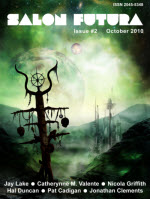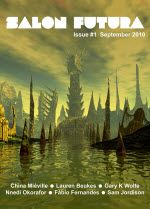Author: Cheryl Morgan
What Do We Mean By YA?

In any hierarchy each oppressed group is always looking for someone else to look down upon. Science fiction and fantasy occupy a pretty lowly place on the greasy totem pole of literary respectability. It is therefore perhaps not surprising that, when last year’s Hugo Award for Best Novel shortlisted three books marketed as “Young Adult”, a few eyebrows were raised around the blogosphere. After all, “serious” literary critics often take the view that SF&F is actually for children, something that you should grow out of reading when you become an adult. Many people will be keen to prove that idea wrong.
Yet SF&F have a long and honorable tradition in providing fiction for teenagers. The “Heinlein juvenile” is often held up as an example of some of the best the genre has to offer. Hugo Gernsback firmly believed in providing science education for young people. And many writers today are enthusiastically jumping into the YA arena. There is clearly a connection here.
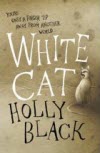 What, you might ask, has prompted this fit of introspection? Well, I recently had the pleasure of reading Holly Black’s latest novel, White Cat [Purchase]. It is a fine book, but I couldn’t help noticing the sticker on the cover proudly proclaiming “A novel for grown-ups from the author of Spiderwick”. Now, the central characters of White Cat are teenagers. Much of the action takes place in a school. The book opens with the lead character up on the school roof, which sounds like an affectionate nod to Philip Pullman’s The Golden Compass [Purchase]. If this isn’t a YA book, I thought to myself while reading it, I don’t know what is. And yet, here was Gollancz eager to claim that it wasn’t. Perhaps the concept of YA is more complicated than I had thought.
What, you might ask, has prompted this fit of introspection? Well, I recently had the pleasure of reading Holly Black’s latest novel, White Cat [Purchase]. It is a fine book, but I couldn’t help noticing the sticker on the cover proudly proclaiming “A novel for grown-ups from the author of Spiderwick”. Now, the central characters of White Cat are teenagers. Much of the action takes place in a school. The book opens with the lead character up on the school roof, which sounds like an affectionate nod to Philip Pullman’s The Golden Compass [Purchase]. If this isn’t a YA book, I thought to myself while reading it, I don’t know what is. And yet, here was Gollancz eager to claim that it wasn’t. Perhaps the concept of YA is more complicated than I had thought.
It is possible, of course, that YA is simply that which we call YA when we point to it. As I understand it, however, Damon Knight’s famous dictum was not an attempt to establish himself, and his fateful finger, as the ultimate arbiter of SFness, but rather it was an early exercise in what we now call crowdsourcing. Knight was saying that if enough people thought a book was science fiction then it probably was. The same can be applied to YA, but that still leaves us asking what leads someone to classify a book as YA in the first place.
 Those who wish to distance SF from YA tend to assume that writing for kids is somehow simplistic, less complex and less challenging than writing for adults. There are ways in which that is probably true. It is unlikely, for example, that anyone would publish a typical Gene Wolfe novel as YA. You don’t normally ask teenager readers to work that hard. But the corollary doesn’t hold. By no means every book published for adults is as complex and demanding as a Gene Wolfe novel. One of my guilty pleasures is Naomi Novik’s Temeraire books. I recently read the latest one, Tongues of Serpents [Purchase], and very much enjoyed it despite the lack of complexity (I raced through it in a day). I am sure that Novik’s books are read and enjoyed by many teenagers. And yet they are not published as YA.
Those who wish to distance SF from YA tend to assume that writing for kids is somehow simplistic, less complex and less challenging than writing for adults. There are ways in which that is probably true. It is unlikely, for example, that anyone would publish a typical Gene Wolfe novel as YA. You don’t normally ask teenager readers to work that hard. But the corollary doesn’t hold. By no means every book published for adults is as complex and demanding as a Gene Wolfe novel. One of my guilty pleasures is Naomi Novik’s Temeraire books. I recently read the latest one, Tongues of Serpents [Purchase], and very much enjoyed it despite the lack of complexity (I raced through it in a day). I am sure that Novik’s books are read and enjoyed by many teenagers. And yet they are not published as YA.
Another possible indicator of YA-ness is the absence of certain themes. Parents are forever getting themselves in a tizzy over what their kids are reading. Sex, drugs, violence: these are all things that kids apparently need protecting from. So do publishers avoid these themes in choosing which books to market as YA? Not a bit of it. Remember all of the moral panic we had over Margo Lanagan’s Tender Morsels [Purchase], which features child abuse and gang rape? There can’t be many topics more potentially nightmare-inducing for teenagers than that, and yet it was happily published as YA.
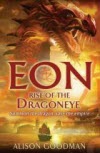 At Worldcon this year I had the pleasure of sharing a panel with Alison Goodman, author of Eon [Purchase], and Hazel Edwards, co-author (with Ryan Kennedy) of f2m: the boy within [Purchase]. Both of these books contain positive portrayals of trans characters. Hazel’s book (which is not SF) actually features a central character who is a young person going through transition from female to male. It is rare to see adult books tackling such themes. If trans characters appear in books for adults it is almost certainly for sensational impact, or as the butt of cruel jokes. YA novels, I have found, are rather more likely to treat social issues like this seriously and sensitively.
At Worldcon this year I had the pleasure of sharing a panel with Alison Goodman, author of Eon [Purchase], and Hazel Edwards, co-author (with Ryan Kennedy) of f2m: the boy within [Purchase]. Both of these books contain positive portrayals of trans characters. Hazel’s book (which is not SF) actually features a central character who is a young person going through transition from female to male. It is rare to see adult books tackling such themes. If trans characters appear in books for adults it is almost certainly for sensational impact, or as the butt of cruel jokes. YA novels, I have found, are rather more likely to treat social issues like this seriously and sensitively.
Another potential definition of YA, and one that worked for me when I read White Cat, is that YA books have central characters who are teenagers. This seems to make sense on a fairly basic level. People like to read books containing characters with whom they identify. If you are a teenager, it makes sense that you would want to read books about teenagers. This would also explain why Novik’s books are not sold as YA.
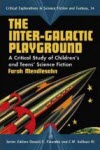 Even here, however, there are complications. For her Hugo-nominated book, The Inter-Galactic Playground [Purchase], Farah Mendlesohn read every YA science fiction book that she could lay her hands on. One of the trends that she noticed in doing so is that YA science fiction has become less and less a matter of science fiction books aimed at teenagers, and more a matter of books aimed at teenagers that happen to have a science fiction setting.
Even here, however, there are complications. For her Hugo-nominated book, The Inter-Galactic Playground [Purchase], Farah Mendlesohn read every YA science fiction book that she could lay her hands on. One of the trends that she noticed in doing so is that YA science fiction has become less and less a matter of science fiction books aimed at teenagers, and more a matter of books aimed at teenagers that happen to have a science fiction setting.
The key issue here is that many YA novels don’t just feature teenage characters, they address issues that are of concern to teenagers: school, parents, first love, and so on. In much the same way as a romance novel can be dressed up in a huge variety of different settings, so a YA novel can be set in different countries, different time periods, and in outer space.
I should note here that Mendlesohn was not advancing “being about teenage concerns” as a definition of YA, she was simply remarking on a trend that she had observed. She felt it was unfortunate that a subgenre which, in the past, had done so much to inspire young people with a love of science, was now reduced to being wallpaper for tales of teenage angst.
Publishing, however, abhors a vacuum. It may go for a very long time sticking to a maxim of “X won’t sell”. For years, maybe decades, it will be impossible to sell a book that is seen to fit the description of X. And then one day an adventurous young editor spots an amazing book that she’d buy in a second if it wasn’t very obviously the very epitome of X. She takes it to her boss, who decides to indulge her whim, and suddenly, because this is such a great book, X is the new in thing and every editor is phoning agents asking them if they have any X-like novels on their lists.
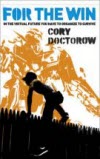 Well, that’s the fairytale version anyway. I don’t think that we are quite on the cusp of a YA science fiction resurgence yet. But we are seeing a number of books that give me cause for hope. Cory Doctorow, for example, is starting to make a career out of publishing political science fiction for teenagers. His Hugo-nominated Little Brother [Purchase] was an extended rant against the evils of security theater. It encouraged young people to stand up against the creeping imposition of a “your papers, please” culture on Western society. His new book, For The Win [Purchase], is ostensibly about video games. But Doctorow says in the introduction that one of his objectives in writing the book was to teach young people about economics, so that they might know when they were being exploited. The novel is based around young people who work as “gold farmers” making money for others though their skill in video games. This is by no means a common teenage concern.
Well, that’s the fairytale version anyway. I don’t think that we are quite on the cusp of a YA science fiction resurgence yet. But we are seeing a number of books that give me cause for hope. Cory Doctorow, for example, is starting to make a career out of publishing political science fiction for teenagers. His Hugo-nominated Little Brother [Purchase] was an extended rant against the evils of security theater. It encouraged young people to stand up against the creeping imposition of a “your papers, please” culture on Western society. His new book, For The Win [Purchase], is ostensibly about video games. But Doctorow says in the introduction that one of his objectives in writing the book was to teach young people about economics, so that they might know when they were being exploited. The novel is based around young people who work as “gold farmers” making money for others though their skill in video games. This is by no means a common teenage concern.
With The Windup Girl [Purchase] having swept almost all before it in this year’s awards, everyone will be looking for the next new book from Paolo Bacigalupi. It is already out, it is called Ship Breaker [Purchase], and if you haven’t heard of it that’s because it was published as YA. Once again this is a book that is by no means only about young love and awful parents. The book is set in a near-future America where young kids on the Gulf Coast are set to work on the difficult and dangerous job of salvaging valuable materials from the hulks of old ships. Like so much of Bacigalupi’s output, this is a book with environmental concerns very much to the fore. Like Doctorow’s work, it is very political.
A hot tip for next year’s Hugo is The Dervish House [Purchase] by Ian McDonald. His three near-future novels set in developing nations (the other two are River of Gods [Purchase] and Brasyl [Purchase]) have proved very popular, but industry gossip suggests that McDonald is moving on to something different. His next novel will apparently be a YA book. And indeed one of the most memorable characters in The Dervish House is a young boy.
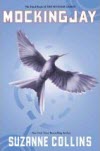 The increased interest in YA science fiction isn’t only coming from established SF authors deciding to write for teenagers. Dystopian fiction is apparently all the rage in YA at the moment. I’m currently reading one of the hottest properties around, the Hunger Games trilogy by Suzanne Collins (The Hunger Games [Purchase], Catching Fire [Purchase] & Mockingjay [Purchase]), and it is very good. It is a fast-paced adventure story with some deft plotting and interesting characters, but it is also much more than that.
The increased interest in YA science fiction isn’t only coming from established SF authors deciding to write for teenagers. Dystopian fiction is apparently all the rage in YA at the moment. I’m currently reading one of the hottest properties around, the Hunger Games trilogy by Suzanne Collins (The Hunger Games [Purchase], Catching Fire [Purchase] & Mockingjay [Purchase]), and it is very good. It is a fast-paced adventure story with some deft plotting and interesting characters, but it is also much more than that.
To start with there are classical references of the sort you might expect to see in a literary novel. In Collins’ near-future America a rich elite, based in what is probably Denver, has subdued the rest of the country and lives in luxury while the rest of the country labors to support them, and starves. The people of the “Capitol” fairly obviously owe a lot to ancient Rome, even down to vomiting up food so that they can eat more at parties. The central conceit, the idea that each subject territory must send a young boy and girl every year to participate in gladiatorial games, is straight out of the legend of Theseus and the Minotaur.
From there, however, Collins’ political astuteness takes over. Rather than have the young tributes be eaten by a monster, she has them pitted against each other in a televised fight for survival in a dangerous wilderness environment. The winner will not just be a survivor, she will be a ruthless killer. I am sure that there will be academic papers written about Collins’ use of reality TV as a tool of political oppression. There may also be papers about how, while writing about how the Gamekeepers cruelly maneuver the young players to provide better entertainment for the TV viewers, Collins must surely be aware that she is deftly maneuvering her characters into yet more desperate situations in order to provide entertainment for her readers.
The gender subtexts of the book are interesting too. The central character, Katniss Everdeen, is a tough, resourceful young lady who is an expert hunter, lethal with a bow, and who became the breadwinner for her family when her father died. She is paired with Peeta Mellark, a charming but soft-hearted boy whose principal skill is decorating cakes. The UK publishers, perhaps not knowing what to do with science fiction for girls, put Peeta’s picture on the cover of book #1 (though that may just be a variant, I’ve seen pictures of a Katniss cover), and avoided people entirely for the other two. Despite this, and despite Collins having eschewed the usual tactic of resorting to initials so as to appeal better to boys, the books are selling like hot cakes.
And so they should. These are good books with subtle touches that any adult reader will appreciate. I noted with amusement, for example, that the selfish bully who becomes Katniss’s most dangerous opponent in The Hunger Games is called Cato. I’m sure that’s not an accident.
As for White Cat, I am still bemused. It is possible that the publishers had concerns about the nature of the plot. Holly Black speculates that in a world where magic is rare and illegal those with magical skills will very quickly fall into the clutches of criminal syndicates. Many of the characters are crooks of some sort, and while the hero, Cassel, is less immoral than the rest of his family, he is still an expert con artist. Maybe having a hero who is a criminal is the step too far that publishers won’t take.
Another possibility is that the comment is actually aimed at teenagers. The Spiderwick series is for younger children and Putting “adult” on the cover might be a subtle way of telling teenagers that this book for them, not for their younger siblings.
My favored explanation, however, is that this was just a marketing gimmick aimed at getting more adult readers for Holly. After all, she’s an excellent writer, and many of those people who complained about last year’s Hugos are doubtless reluctant to try her work, or that of anyone well known for writing for the YA market. They shouldn’t be. And neither should you. There are many fine books out there waiting to be read. If they are, on average, written in simpler language than some other books you are used to, well that just means you can read them more quickly, and thereby read more of them. Why not give them a try?
By one of those surreptitious coincidences that happen on the Internet, Gary K. Wolfe and Jonathan Strahan spent a lot of their most recent podcast talking about the nature of YA fiction. You can listen to them here.
The Salon: Writing LGBT Characters

This month on The Salon we welcome three writers who identify as members of the LGBT community. Nicola Griffith, Hal Duncan and Catherynne M. Valente talk to Cheryl Morgan about writing LGBT characters.
» Read more
Interview: Jay Lake

Cheryl Morgan talks to Jay Lake in a hotel room in Melbourne, Australia.
» Read more
Interview: Pat Cadigan

Cheryl Morgan talks to Pat Cadigan at Heathrow airport shortly after their return from Finncon.
» Read more
Editorial: October 2010
September has been an interesting month. Reaction to Salon Futura at Worldcon was very positive, but then I went and won a Hugo as part of the Clarkesworld team and that rather distracted me. I did, however, bag an interview with Jay Lake, which you can find in this issue, and one with Seanan McGuire that we will have up next month.
» Read more
Geffen Award Winners
Israeli fandom has spoken, and the 2010 Geffen Award winners have been announced. Terry Pratchett and Isaac Asimov take the honours for translated works. Full details at SF Awards Watch.
New Online Fiction From Germany
Via the indispensable World SF blog, we discover that Inter Nova, a magazine based in Germany, has gone fully online. It publishes in English, but aims to publish primarily authors from outside of the English-speaking world. Translation services may be available in the future, but for now submissions must be in English. Interested authors should note that the magazine is strictly science fiction, no fantasy or horror. Presumably the decision of the editors is final in deciding what that means. The site currently has contributions from Brazil, Argentina, Italy, Croatia, South Africa, Israel and England in addition to Germany.
Two Interviews
Two very interesting interviews turned up in our blog feeds today. The first is at Techland where Lev Grossman interviews Paolo Bacigalupi about his sudden rise to fame, and the pair exchange some snark about literary fiction. And if you think that Paolo really has been an overnight success, go read the interview and find out how long you have to labor in obscurity before you get that sort of success.
The other interview is at World SF where Charles A. Tan talks to Indian SF writer, Samit Basu. There are some fascinating comments about the rapidly changing nature of the book market in India, and about the status of SF and fantasy in India. Also Samit is kind enough to quote Cheryl Morgan.
Banned Books Week
It is that time of year again: time to celebrate all of those wonderful books that have attracted the ire of self-appointed guardians of public morality. Here are The Guardian and GalleyCat highlighting some of the many events planned for the week.
Apex Book of World SF, Vol. 2
The Apex Book Company has announced the table of contents for volume 2 in Lavie Tidhar’s Apex Book of World SF anthology series. This really is an international affair, with contributors from far and wide around the globe, including Malawi, Peru, Cuba, India and Finland, to name but a few. The featured authors include Fábio Fernandes, who was a guest on The Salon last issue, and Lauren Beukes, whom we interviewed. The full list of stories can be found here.
Jay Lake Free of Cancer
Author Jay Lake reports that the growth removed from his liver recently has been tested and pronounced non-cancerous by his doctors. Further chemotherapy is therefore not required. We are delighted to hear this, and look forward to very many new Jake Lake novels and stories in future years.
Classic Steampunk Re-issues
Angry Robot Books have announced re-issues of two classic early steampunk novels by K.W. Jeter: Infernal Devices and Morlock Night. John Coutlhart, whose work adorns our first ever issue, did the cover art. We think it is gorgeous. Take a look.
Norton Awards Announced
The winners of the 2010 Norton Awards are Trina Robbins (writer) and Boilerplate (work, by Paul Guinan & Anina Bennett). Further details on Science Fiction Awards Watch.
September Chinese SF Newsletter
The September issue of the Chinese Science Fiction Newsletter is now available online. It includes news of various projects to publish Chinese SF, both in the original language and in translation.
Last Drink Bird Head Award Nominees
Ann & Jeff VanderMeer have announced the nominees for the 2010 Last Drink Bird Head Awards, which “celebrate those in the genre community who enrich us with their time, energy, and words, for causes greater than themselves.” The full list is available here. The Neil Clarke Special Achievement Award, which does not have a nomination stage, goes to L. Timmel Duchamp.
British Fantasy Awards
The British Fantasy Awards were announced at FantasyCon last night. Our sister site, Science Fiction Awards Watch, has the list of winners.
Issue #1
Editorial: Welcome to Salon Futura
Hello, and welcome to the first issue of Salon Futura, a new and hopefully somewhat different magazine devoted to the discussion of science fiction, fantasy and other forms of speculative literature.
» Read more
Writing in the Real World
Cheryl Morgan is Salon Futura’s editor. She will be writing mainly about recent novel releases.
» Read more
The Salon: A Changing Conversation
Each month Cheryl Morgan invites a number of celebrity guests to visit The Salon and talk about some topic related to speculative literature.
» Read more
Interview: China Miéville
Cheryl Morgan talks to China Miéville at China’s home in North London.
» Read more
Interview: Lauren Beukes
Cheryl Morgan talks to Lauren Beukes at the home of John & Judith Clute in North London.
» Read more
Tor UK Launches Newsletter
Tor UK, publishers of Neal Asher, Mark Charan Newton, Alan Campbell and many others has launched an email newsletter to keep fans up to date with the latest developments. You can sign up here.
Angry Robots Invade North America
Angry Robot, the new company that publishes, amongst other people, our friends Colin Harvey and Lauren Beukes, has launched in the USA and Canada. Much robotic excitement can be found over at their website.
Best American Fantasy Cancelled
From Jeff VanderMeer comes the sad news that the ground-breaking Best American Fantasy anthology series has been canceled. Larry Nolen, who had taken over as series editor, has posted the list of stories he and guest editor, Minister Faust, would have been considering for inclusion in the fourth volume of the series. Check out the list at Larry’s blog, the stories are well worth a look.
Colleen Lindsay Joins Penguin
Colleen Lindsay has left her position as an agent with FinePrint Literary Management and is taking up a job doing online PR for Penguin. Lindsay was previously in PR with Random House before taking up agenting. We wish her all the best in her new job.
Scalzi and Egan Win Seiuns
John Scalzi’s novel, The Last Colony [Purchase], and Greg Egan’s story, “Dark Integers”, have won the translated fiction categories in this year’s Seiun Awards in Japan. For the full results see SF Awards Watch.
The River Has Roots

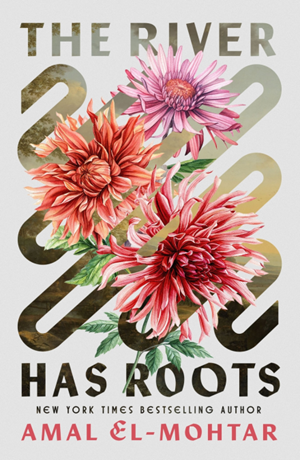 You should not need telling by now that Amal El-Mohtar writes beautifully. If you are one of the few people in the speculative fiction community who has not yet read This is How You Lose the Time War, go out and buy it straight away. Amal has been quiet since then, but this new book is every bit as lyrical, if much more conventional in structure.
You should not need telling by now that Amal El-Mohtar writes beautifully. If you are one of the few people in the speculative fiction community who has not yet read This is How You Lose the Time War, go out and buy it straight away. Amal has been quiet since then, but this new book is every bit as lyrical, if much more conventional in structure.
The River Has Roots is a modern story based on a bunch of folk motifs. It concerns two sisters who live close to the border with Faerie. A river runs through their property and, at the point upstream where it passes two giant, old willow trees standing like guardians on either bank, it exits that magical realm.
The Hawthorn family, of whom our two heroines are the only children, trade in willow wood. No, not Those Willows, obviously. There are many other willows lining the banks of the River Liss downstream from the border with Arcadia, as El-Mohtar has named her faerie land. Willow wood is used for many things, but perhaps most importantly for making magic wands for magicians. Willows growing on the lands of the Hawthorn family, along the banks of the Liss, are by far the best source of wood for this purpose.
The elder sister, Esther, is being courted by the heir to a neighbouring estate. She does like him. He is dull and boring. Worse, he seems less interested in her and more interested in how much money he could make were he to acquire the Hawthorn lands by marriage. In any case, Esther is already in love with another. The only problem is that her beau is not exactly human.
You know how folk tales go. I don’t have to tell you any more. What I do have to say is that this book is not just a folk tale. It also contains a fair degree of musing on the matter of magic, words and song, because magic is gramarye and words are magic, especially when put to song.

Title: The River Has Roots
By: Amal El-Mohtar
Publisher: Arcadia
Purchase links:
Amazon UK
Amazon US
Bookshop.org UK
See here for information about buying books though Salon Futura

